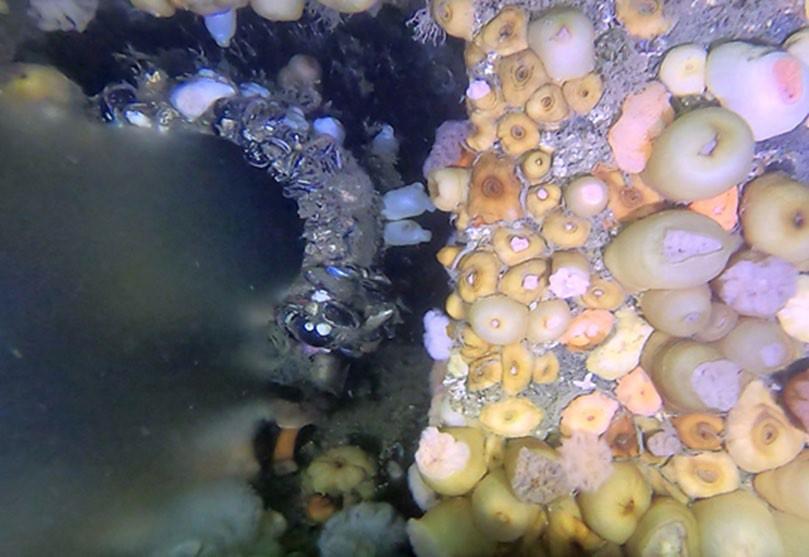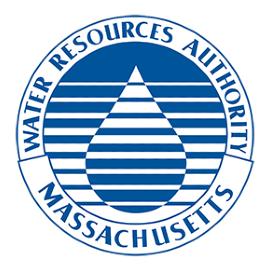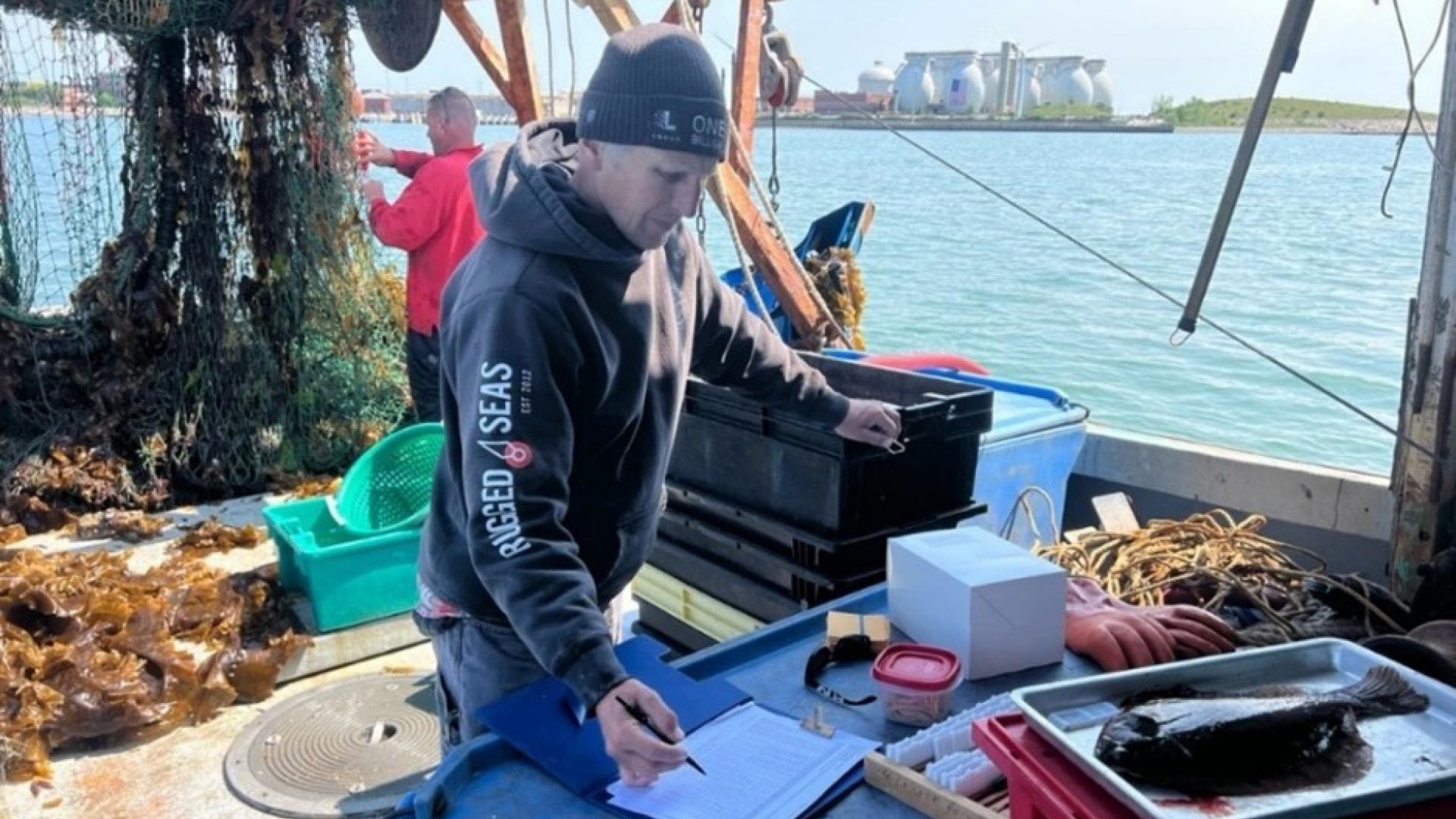The Massachusetts Water Resources Authority (MWRA) is pleased to report in the 2024 Outfall Monitoring Overview that MWRA monitoring data continue to show no unexpected or serious effects on Massachusetts and Cape Cod Bays from Deer Island Treatment Plant discharges. Water quality remains good and both the plankton and seafloor animal communities are healthy and diverse. MWRA's National Pollutant Discharge Elimination System (NPDES) permit requires effluent testing before it is discharged into Massachusetts Bay, and monitoring of multiple components of the bay’s ecosystem. 2024 marks the 18th year that Deer Island has been in full compliance with the NPDES permit, earning MWRA an award from the National Association of Clean Water Agencies.
Summary of 2024 Results
- Solids discharges are low, due to secondary treatment and pre-treatment by industrial sources.

- Concentrations of heavy metals like zinc, copper, and lead remain low in the Deer Island effluent discharge, as do organic contaminants like poly-chlorinated biphenyls (PCBs).
- Massachusetts Bay water quality is good, and data show that the outfall has not led to signs of eutrophication, when nutrients overstimulate phytoplankton growth.
- Seafloor communities around the outfall are thriving. Analyses using data collected during seafloor surveys have shown that the discharge has not influenced the kinds of animals observed around the outfall. Instead, the biggest influences of animal community composition are the types of seafloor sediment (rocky, sandy, etc.) and the water depth.
In 2024 MWRA measured pollutants in winter flounder, lobsters, and blue mussels. Results show continued continued low pollutant levels well below the caution thresholds in all three species. (Below: flounder mercury and lobster PCB levels, 1992-2024.)
Image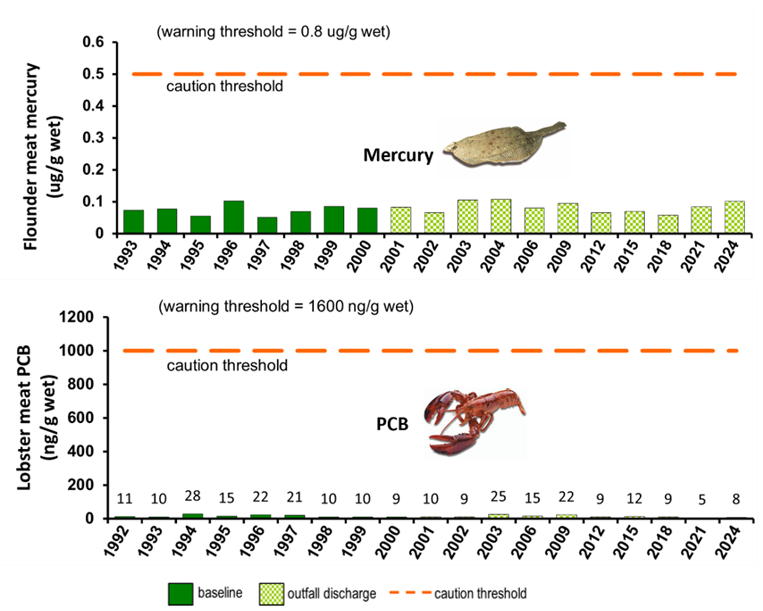
Mercury levels in flounder and PCBs in lobsters caught near the Massachusetts Bay outfall have remained low.
Boston Harbor Water Quality
The Harbor’s history of receiving poorly treated, nutrient rich sewage had made it one of the most contaminated harbors in the country. This made the Harbor vulnerable to eutrophication, a condition of low dissolved oxygen resulting from an overgrowth of phytoplankton. After MWRA diverted the Deer Island discharge to Massachusetts Bay in 2000, Boston Harbor experienced a large decrease in ammonium, a nutrient that is present in sewage, a large decrease in pathogens, and increases in bottom water dissolved oxygen. The Harbor is now an urban waterbody with good water quality and healthy seafloor communities and sediments, and these trends continued in 2024.

Environmental Conditions are Changing Throughout the Region
Since MWRA began monitoring in the early 1990s, flounder and mussel populations have declined region-wide. These changes are likely driven by environmental conditions including the increasing temperatures in the Gulf of Maine.

In addition to potential effects of warming, sampling winter flounder has become more challenging, partially due to the large amount of entangled lobster traps and other fishing gear resting on the ocean floor, known as "ghost gear."
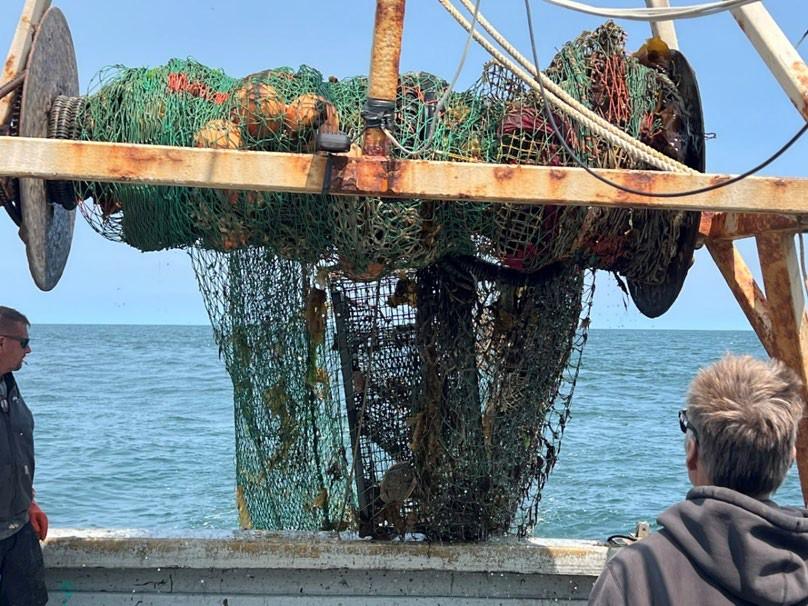
Stellwagen Bank National Marine Sanctuary
Stellwagen Bank supports fisheries and is a major feeding ground for whales, and is part of the Stellwagen Bank National Marine Sanctuary. The Sanctuary’s western boundary is about 12 miles east of the MWRA outfall. A recent environmental assessment of the sanctuary found that changes to seafloor habitats and animal communities came mostly from fishing practices, which can change the species makeup of the ocean communities.
